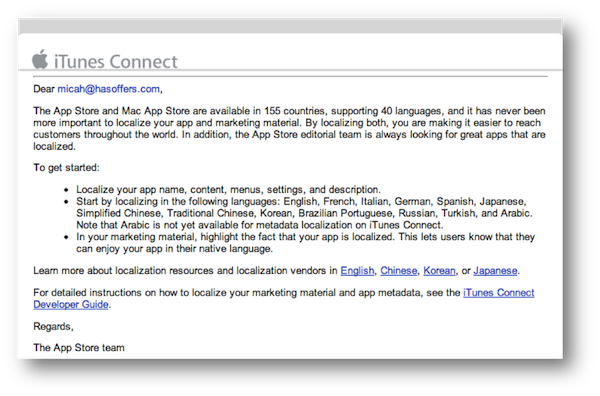 The world of mobile apps is foreign territory to most online marketers.
The world of mobile apps is foreign territory to most online marketers.
Developing apps require different skills than traditional website development. Mobile app creation forces marketers to understand the limitations of different platforms, devices, and tracking.
Once an app is developed and ready for download, the biggest challenge, just like with websites, is to get users to find it, or even know of its existence.
Your app is one of a million, with 700,000 available in Apple’s App Store, and an equal number in Google Play.
Traditional SEO Tactics to Improve App Discoverability
Users can discover and find apps in two ways: searches through the app stores as well as searches on search engines. Optimizing mobile apps to be more easily discovered by users isn’t that different from optimizing a website for that same purpose.
The two SEO elements to focus on for mobile apps and the app stores are content and links.
SEO for websites primarily includes three things;
- Getting your site crawled.
- Optimizing the content.
- Building authority through links and social media endorsements.
The SEO difference for mobile apps is that the page on which the app lives is what needs to be optimized, not the app itself. Search engines don’t crawl inside mobile apps to learn what it is or why people want to download it. The content on the page around the mobile app needs to provide the context to give relevant cues for what the app is about.
An app usually has two pages to optimize: the app store page and a marketing page on the business’s website.
Optimizing for App Stores
The descriptive content submitted with the app is vital to the app’s success in the app store when submitting an app to app stores.
The title of the app determines the URL and title tag of the web page the app is hosted on. Choose a title for the app that reflects the brand and also the app’s function. This allows your app to be found by your brand name as well as the purpose of the app if brand isn’t top of mind for the user.
The category an app is submitted to is also important for better visibility in searches. A lot of times an app can fit into several categories. If there is no one best fit, choose the category that best fits the app’s purpose but also contains the least number of competing apps.
The keyword field influences the search results because there is far less text to indicate relevance of an app than there is for a traditional web page. Just as Google and major search engines frown on keyword stuffing on websites, stuffing the keyword field with unrelated keywords can get an app rejected from app stores, so play fair – stick with descriptive keywords that are relevant to the purpose of the app.
The description field is the largest area of the page and acts like the main content on a web page. As with traditional SEO for websites, the description for the app should be written for the target audience and be optimized with relevant keywords.
Linking the app store page to the official app page on your website, and reciprocating that link from the website back to the app store page, will reassure the user that they’ve found the official app from the brand, not a fake or parody app.
Optimizing for Mobile App Pages on Websites
The app should also have a page on your corporate website for cross-promotion and linking.
For example, somewhere in the app description you should provide a link to the your desktop website. The website should also link back to the destination of the mobile app in the app store(s). Linking between the app store and the website boosts the app’s SEO value and also confirms that the app is authentic, not an imposter.
Other than cross-linking with the app store and using specific metadata attributes, optimizing the content on the page that the app lives on is no different from optimizing content on any other page on your website.
Optimizing for Local Markets
Although the United States app store market is the largest revenue opportunity, users from other countries can benefit from an app that supports their native language and country. Just last week, Apple sent its developers an email reminding them of the importance of localizing apps and marketing material:

The process of doing this is called localization. Apple offers clear steps to help app developers internationalize and localize apps to capture the opportunity of more revenue, by attending to the native user experience of other countries worldwide.
When investing resources in localizing your app, be sure to know your target audience. It would be a waste of resources to localize for every country and language.
A recent Flurry study found that usage for a particular category of app is different based on countries. Find out which countries your app is most popular in to determine the biggest impact for your localization efforts.
For example, in China more people use action game apps versus music game apps, but in Japan it’s the exact opposite.
You do have to consider the incremental downloads and revenue you can gain from internationalization and localization strategies, but initial studies are showing that localization will be a smart investment for expanding your app installs and revenue internationally.
